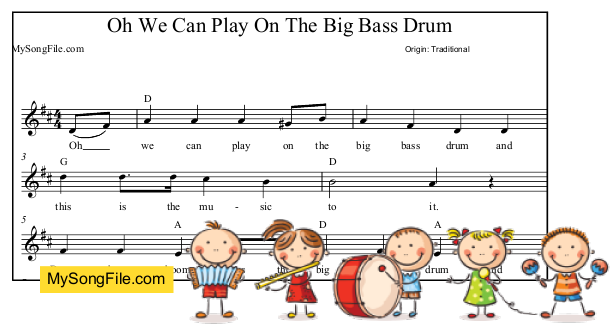How do I teach little kids the beat?
Featured on Sunday 03 September, 2017

Teaching beat is a big topic, and it's best to start early.
Don't rush to teach young children the terms 'beat' and 'rhythm' or they may use the terms interchangeably. Instead, PREPARE them so they can confidently hear, feel and keep the beat even before the term is taught. This is a common and important approach with the Kodály Method for all musical elements.
So how do we teach the beat if we can't use the term 'beat'?! Below are many practical examples. Instead of referring to the beat directly, use a phrase like 'keep time with the music'.
Rhymes
Rhymes can be said with a strong beat and take away the 'distraction' of a melody – particularly for children who are not confident singing yet. "Chop Chop Chippity Chop" is a great example, FREE for a limited time.
Also try "See a Pin and Pick it Up" and "A Charm To Cure Hiccups".
Fast and slow
We want our children to feel the beat in a variety of tempi. Sing "Bye Bye Baby" while rocking the baby on the beat - FREE for a limited time.
For a faster song try "Down By The Station", or for another slower song sing "Twinkle Twinkle Little Star".
Loud and soft
Keep the beat with loud and soft music, because children will tend to want to sing faster when the music is loud!
Try singing a song like "Go To Sleep" softly and fairly slowly and then sing it loudly. Observe if your class comfortably keeps the beat at a slower tempo. This one is great for checking this, as it is in 3/4 metre which can easily 'run away' in speed! FREE for a limited time.
Also try "Oh We Can Play On The Big Bass Drum".
With "I Am A Fine Musician" you can weave in some discussion about instruments that are naturally softer (flute) and louder (trumpet).
Beat icons
Check confidence and independence by having students come up to the board to point to beat icons.
For example, "Doggie Dogggie – Beat Sheet" (and it's free below for a limited time).
Also try "Apple Tree (Beat Sheet Colour)" and "Bee Bee Bumble Bee (Beat Sheet Colour)"
Simple and compound metre
It is important to use songs that are in simple time and compound time. If a song is available in both, like "Johnny Works with One Hammer", only use one version to avoid confusion.
Children love pretending to be elephants in "Heigh Di Ho". They keep a nice, strong, slow beat with their whole bodies - FREE for a limited time.
There is also an abundance of nursery rhymes in compound metre. For example "Little Miss Muffet" (also available as a singing story).
More resources
For more techniques for PREPARING children to learn the beat, browse our comprehensive strategy for teaching beat and rhythm. The strategy also includes the MAKE CONSCIOUS and PRACTISE phases.
Below are full resources which support the techniques above - available free for a limited time.
|